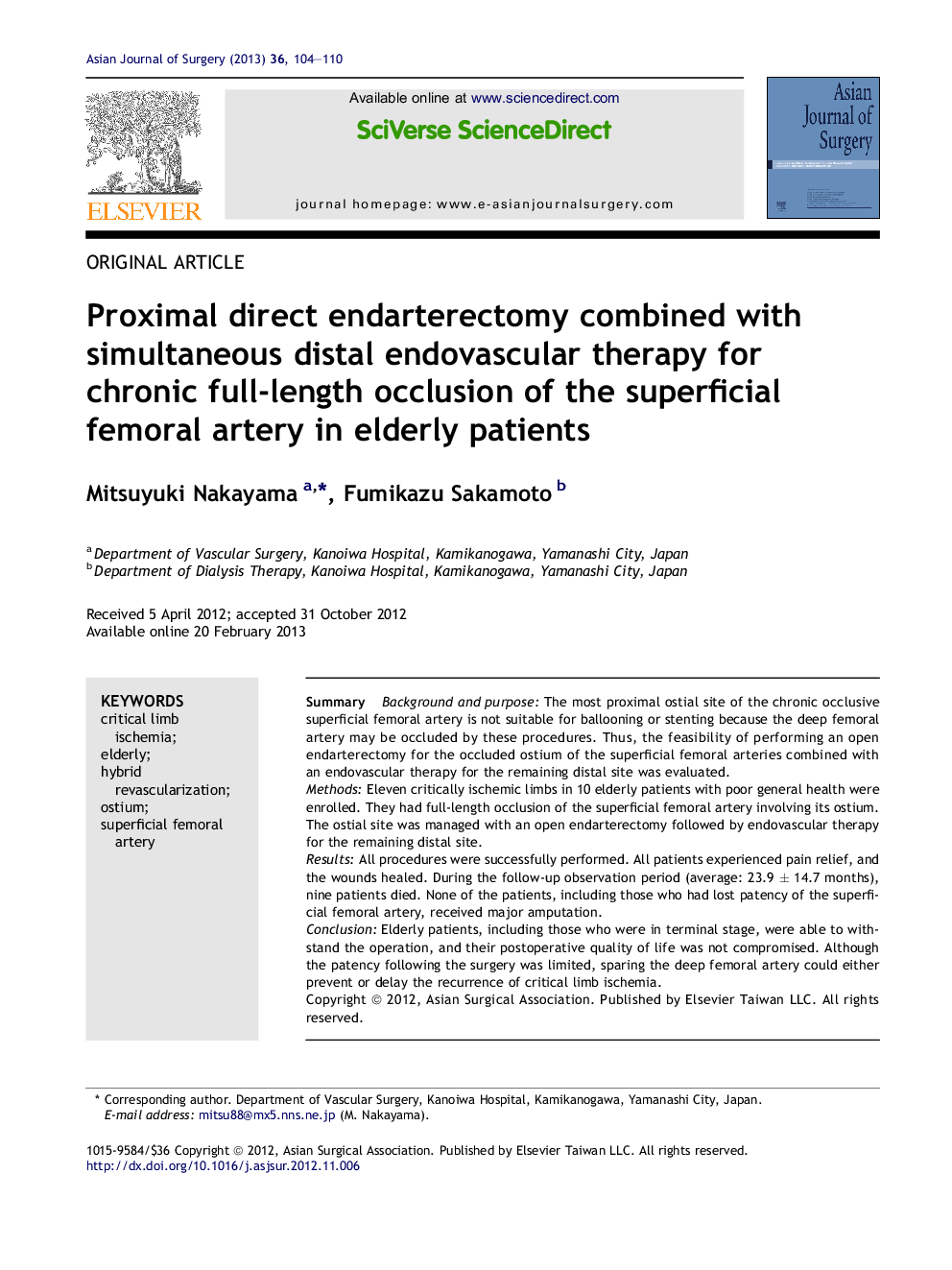| Article ID | Journal | Published Year | Pages | File Type |
|---|---|---|---|---|
| 4282635 | Asian Journal of Surgery | 2013 | 7 Pages |
SummaryBackground and purposeThe most proximal ostial site of the chronic occlusive superficial femoral artery is not suitable for ballooning or stenting because the deep femoral artery may be occluded by these procedures. Thus, the feasibility of performing an open endarterectomy for the occluded ostium of the superficial femoral arteries combined with an endovascular therapy for the remaining distal site was evaluated.MethodsEleven critically ischemic limbs in 10 elderly patients with poor general health were enrolled. They had full-length occlusion of the superficial femoral artery involving its ostium. The ostial site was managed with an open endarterectomy followed by endovascular therapy for the remaining distal site.ResultsAll procedures were successfully performed. All patients experienced pain relief, and the wounds healed. During the follow-up observation period (average: 23.9 ± 14.7 months), nine patients died. None of the patients, including those who had lost patency of the superficial femoral artery, received major amputation.ConclusionElderly patients, including those who were in terminal stage, were able to withstand the operation, and their postoperative quality of life was not compromised. Although the patency following the surgery was limited, sparing the deep femoral artery could either prevent or delay the recurrence of critical limb ischemia.
